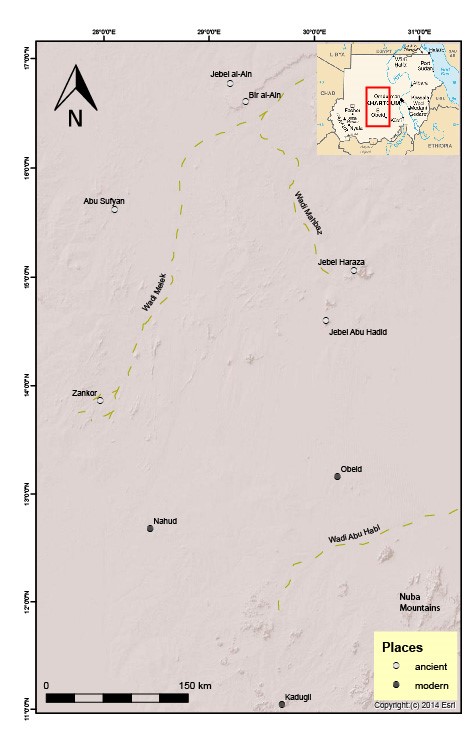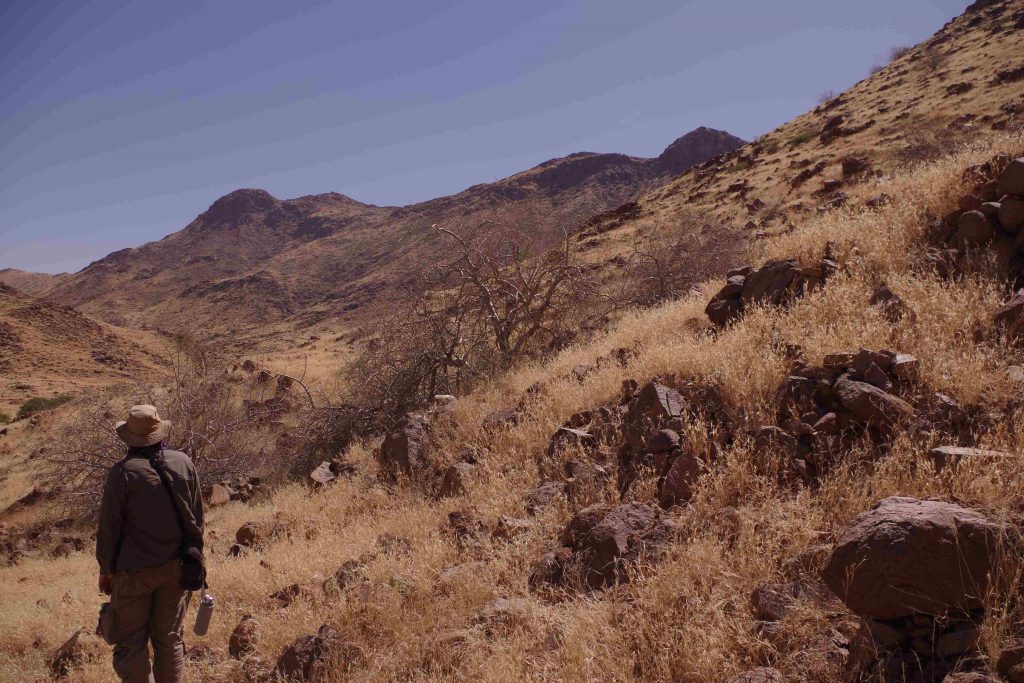Kordofan is a region in Sudan between the course of the (White) Nile to the east and the Darfur highlands to the west. Its landscape units stretch from the subtropical hills of the Nuba mountains in the south, over the savannah rangelands in the centre, to the arid semi-desert of the northern part of Kordofan. The main wadi system of Kordofan is the Wadi Melek, originating near Nahud and draining into the great southern bend of the Nile. The focus of our project is between the hills of Jebel al-Ain and Jebel Haraza in semi-desert Northern Kordofan.

Until the initiation of our project, the large region of Kordofan had been scarcely explored archaeologically. After some geographical surveys carried out by British officers in the 1920’s, leading to the discovery of the ruined sites of Zankor by A.E.D. Penn and of Abu Sufyan by D. Newbold, almost no archaeological explorations were conducted until 2002, when a mission of the Charles de Gaulle University of Lille led by Brigitte Gratien started prospections and excavations at both beforementioned sites. These works lasted until 2005.
From 2008 onwards, a mission of the University of Khartoum, led by Houwida Mohammed, conducted prospections in Northern Kordofan, starting in the district of Sodiri.
In 2011, a joint mission of the Adam Mickiewicz University of Poznań, Poland, and the Sudanese National Corporation of Antiquities and Museums conducted an additional survey in the vicinity of Sodiri, led by Mariusz Drzewiecki.
Also in 2011, first preliminary survey activities started in the Jebel al-Ain region, which later led to the InterLINK project at the University of Muenster.
The InterLINK project
InterLINK (short for Interregional Linkage Investigations at Northern Kordofan) is an archaeological survey project at the University of Muenster under the umbrella of the Priority Program “Entagled Africa”, funded by the German Research Foundation (DFG).

The project investigates the relations between the ancient and medieval cultures of the Nubian Nile Valley and the contemporary cultures of the Chad Basin and other parts of the Sahel region. It aims to clarify questions regarding the role of Northern Kordofan as a cultural-historical contact zone – both in a small-scale way (connection of the Jebel al-Ain region to the Nile Valley and the Ancient Kordofan cultures with the Zankor Centre), as well as with regard to larger spaces (the role of North Kordofan as a contact zone between the Nile Valley cultures and the cultures of the Sahel In particular).
The main research questions:
- Where within the region existed ecologically favored zones that might have represented core and crystallization points of historical cultural development?
- How were (rather linear) macro-communication and (rather network-oriented) micro-communication related to each other? In concrete terms, can long-distance transport, e.g. caravan trade, and short-ranged transport, e.g. within the framework of pastoral-transhumant economic concepts, be differentiated from each other on the basis of the testimonies of various routes?
- Which role did macro-communication through this region play in the transfer of technology across the region?
- To what extent do cultural links with the Nile Valley, especially in the jebel al-Ain area, also reflect a political-administrative penetration of this peripheral area by the state-organized structures of the Nile Valley?
